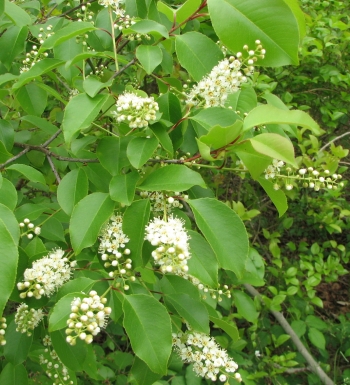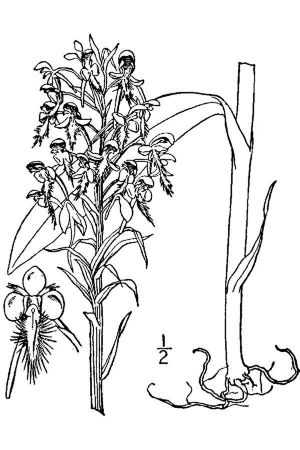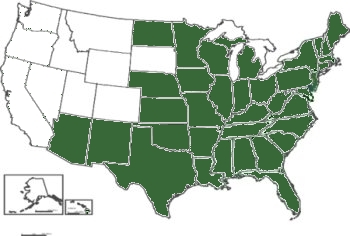Prunus serotina
 |
 |
Photo Courtesy Renee Brecht |
Britton & Brown |
| Botanical name: | Prunus serotina |
| Common name: | black cherry |
| Group: | dicot |
| Family: | Rosaceae |
| Growth type: | forb/herb |
| Duration: | perennial |
| Origin: | native |
| Plant height: | 40 - 60' |
| Foliage: | Bark is light to dark gray, resembling a birch when younger, and developing broken, squarish scaly plates with age. Leaves are shiny dark green, simple, alternate, with finely toothed margins. Leaves are odorous when crushed, due to the cyanide in the leaves. Twigs have a faint almond odor when snapped. |
| Flower: | tiny white flowers on elongated drooping cluster (racemes) |
| Flowering time: | late April to mid-May, either before or with the leaves |
| Habitat: | thickets, along streams, in successional habitats, open disturbed ground, roadsides |
| Range in New Jersey: | statewide only rarely introduced in the Pine barrens |
| Heritage ranking, if any: | n/a |
| Distribution: |  |
| Misc. | Black cherry is an early successional species, occuring in
successional fields and borders of forests. It hosts a number of
caterpillars. Its fruit is edible and its wood is used in cabinetry. Insect pollinated. |